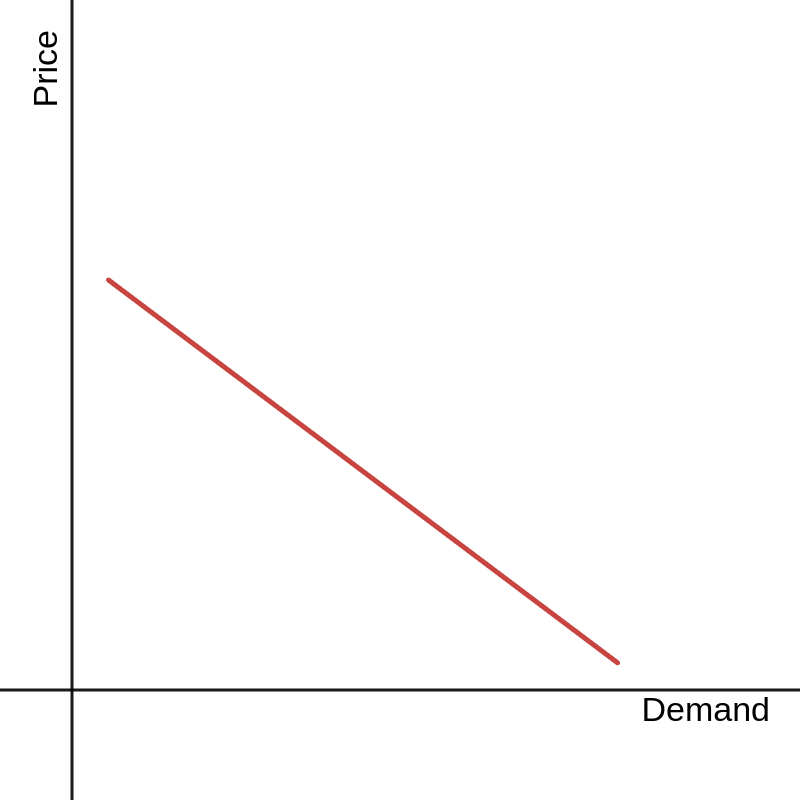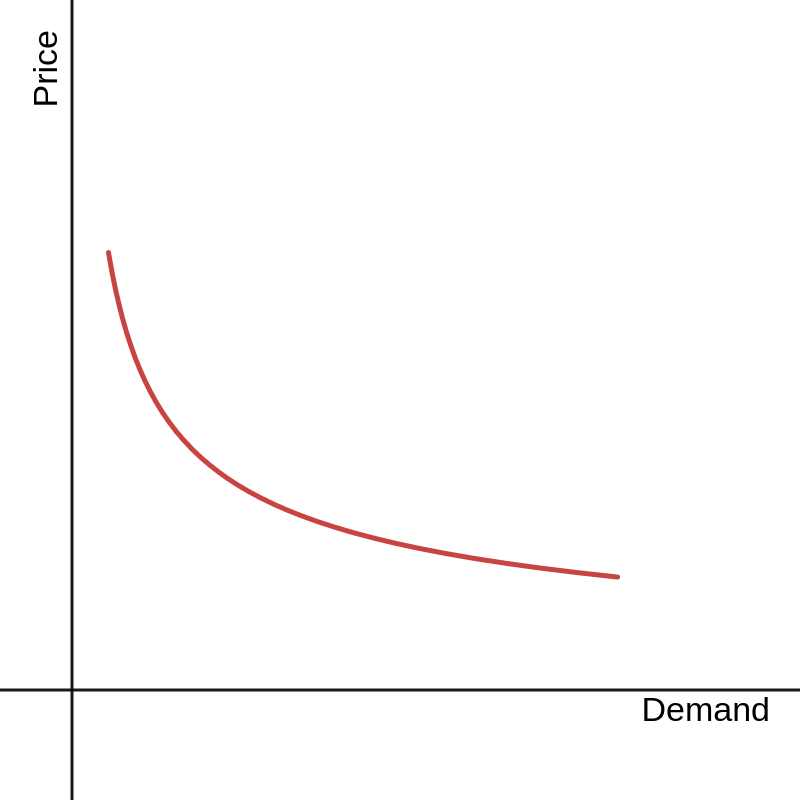Demand Curve
Contents
Simple Model
Demand for a good is modeled in terms of other structural factors, such as price of the good, prices of complementary goods, and individual income. This model can be fit with Econometrics/econometric methods.
A simple model describes demand (D) in terms of price (P): D = a + bP. This is an example of a demand curve.
Traditionally, the inverse demand curve is graphed instead; that is, price is conceptualized as the dependent variable. The curve is rewritten as P = (D - a)/b.
Interpretation
The above model graphs as:

A demand curve explains how a change in price for some good, holding all else constant, causes a change in demand for that same good. Such a change is called a movement along the curve.
If some other variable is allowed to vary, the demand curve itself changes. This is called a shift of the curve.
Law of Demand
Conventionally, it is assumed that price and demand are inversely related. In the simple model above, this would mean b < 0. In a multivariate model, the assumption looks like ∂D/∂P < 0.
The opposite case is called a Giffen good.
Elasticity
The price elasticity of demand is the rate of relative changes in demand to price.
Necessarily, this rate is calculated in reference to two points on a demand curve. Therefore the relative changes used in the rate are computed with:
distance between points (ΔQ or ΔP)
- the average of the points
The notation for arc elasticity is:
Note that sometimes eD is used instead of ε.
Following from the law of demand, elasticity is always negative. Sometimes it is reported as an absolute value.
Relationship to Demand Curves
The price elasticity of demand is subtly different from the slope of the demand curve: ∂D/∂P is not a relative rate. The important consequence is that a demand curve with constant elasticity is convex.

If a good is known to have constant elasticity, the demand curve is formulated like D = aPε.
A perfectly inelastic good is one where demand is unaffected by changes in price. Subsistence or lifesaving goods can be described in this way. Such a good has elasticity of 0; incidentally the demand curve would be drawn as a vertical line (i.e., undefined slope).
A perfectly elastic good is one where price will not change. Commodities could be described in this way; regardless of shifts in demand, no seller can succeed in raising prices above the prevailing market price. Such a good has infinite elasticity; incidentally the demand curve would be drawn as a horizonal line (i.e., slope = 0).
